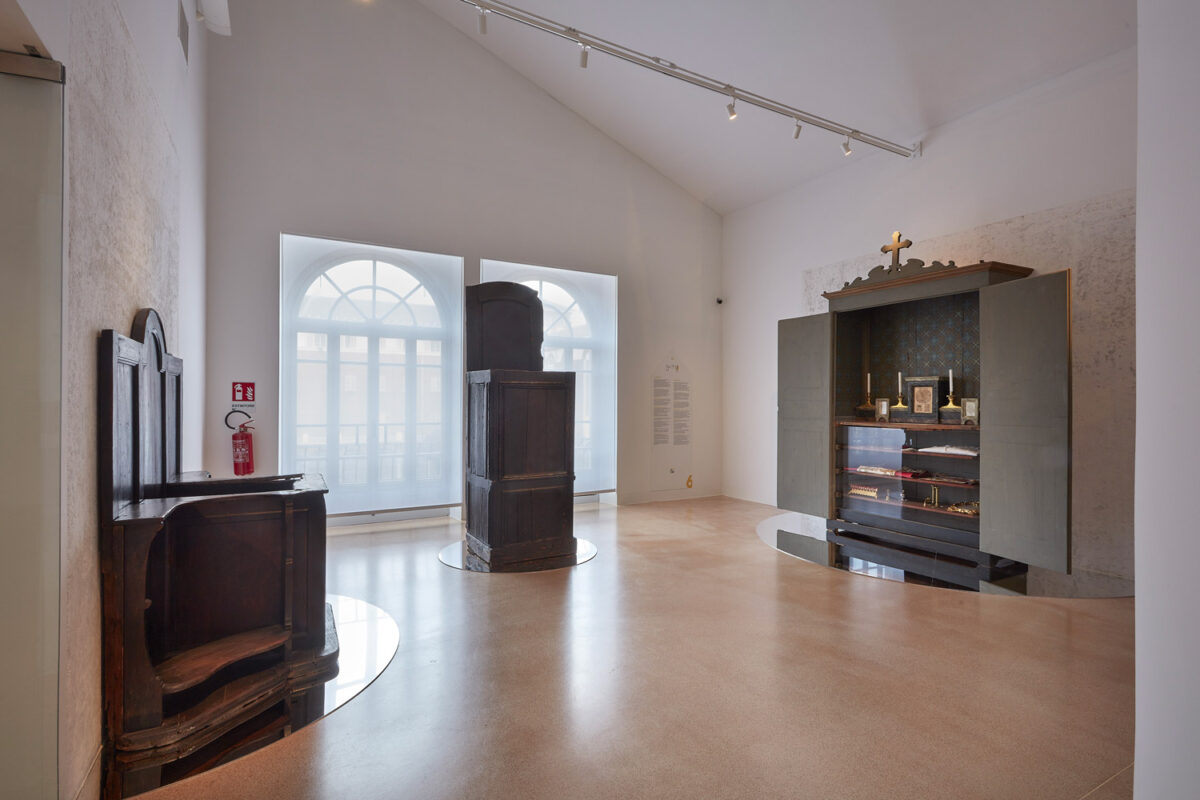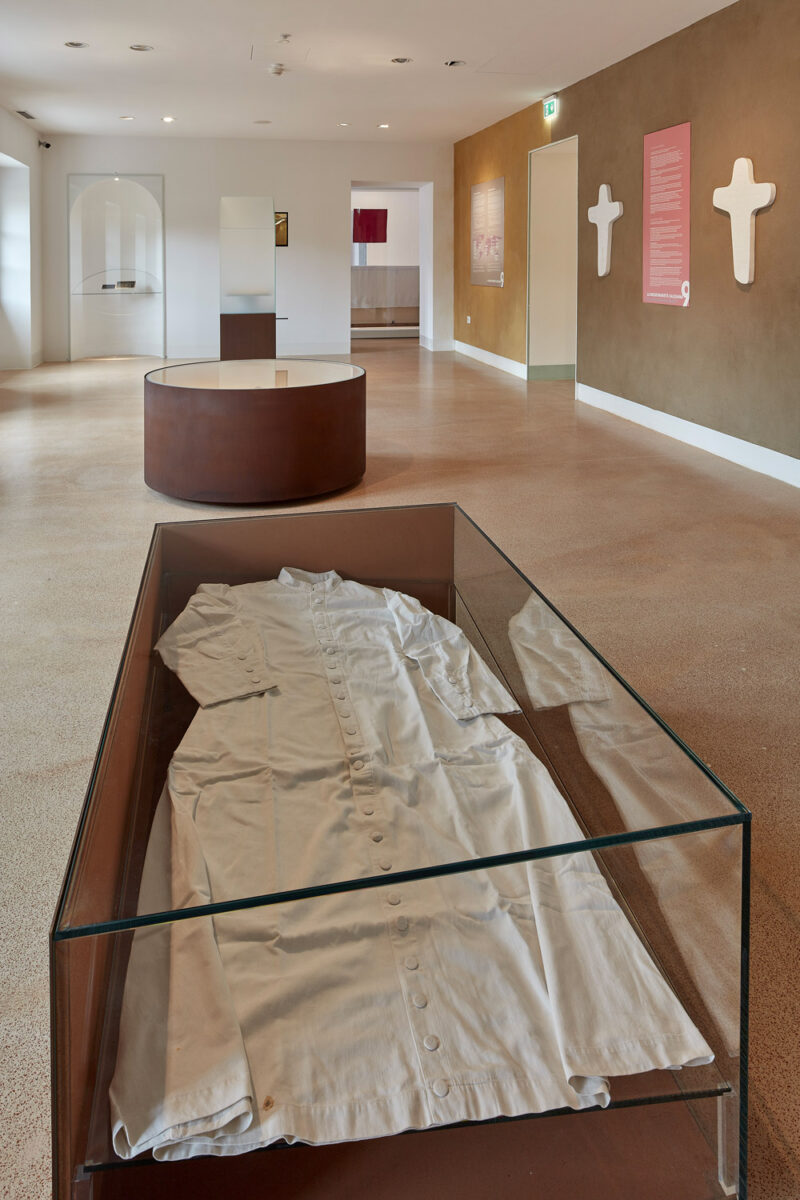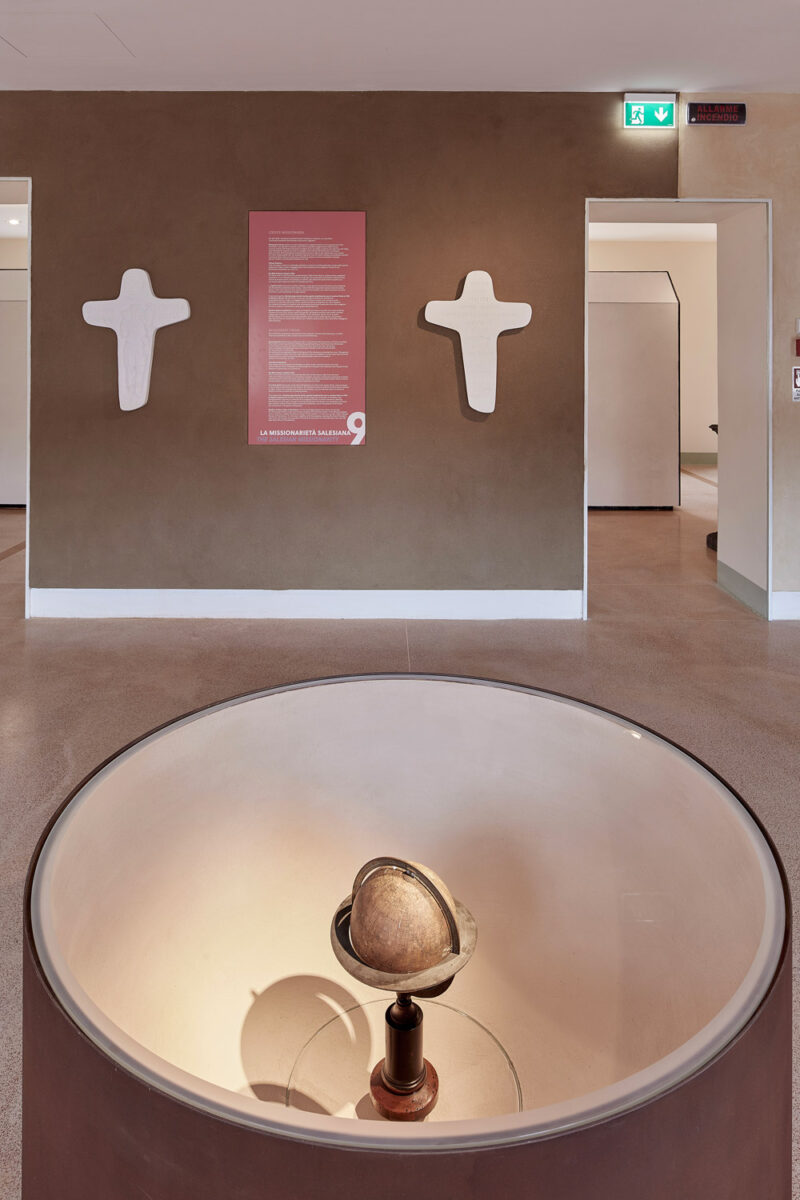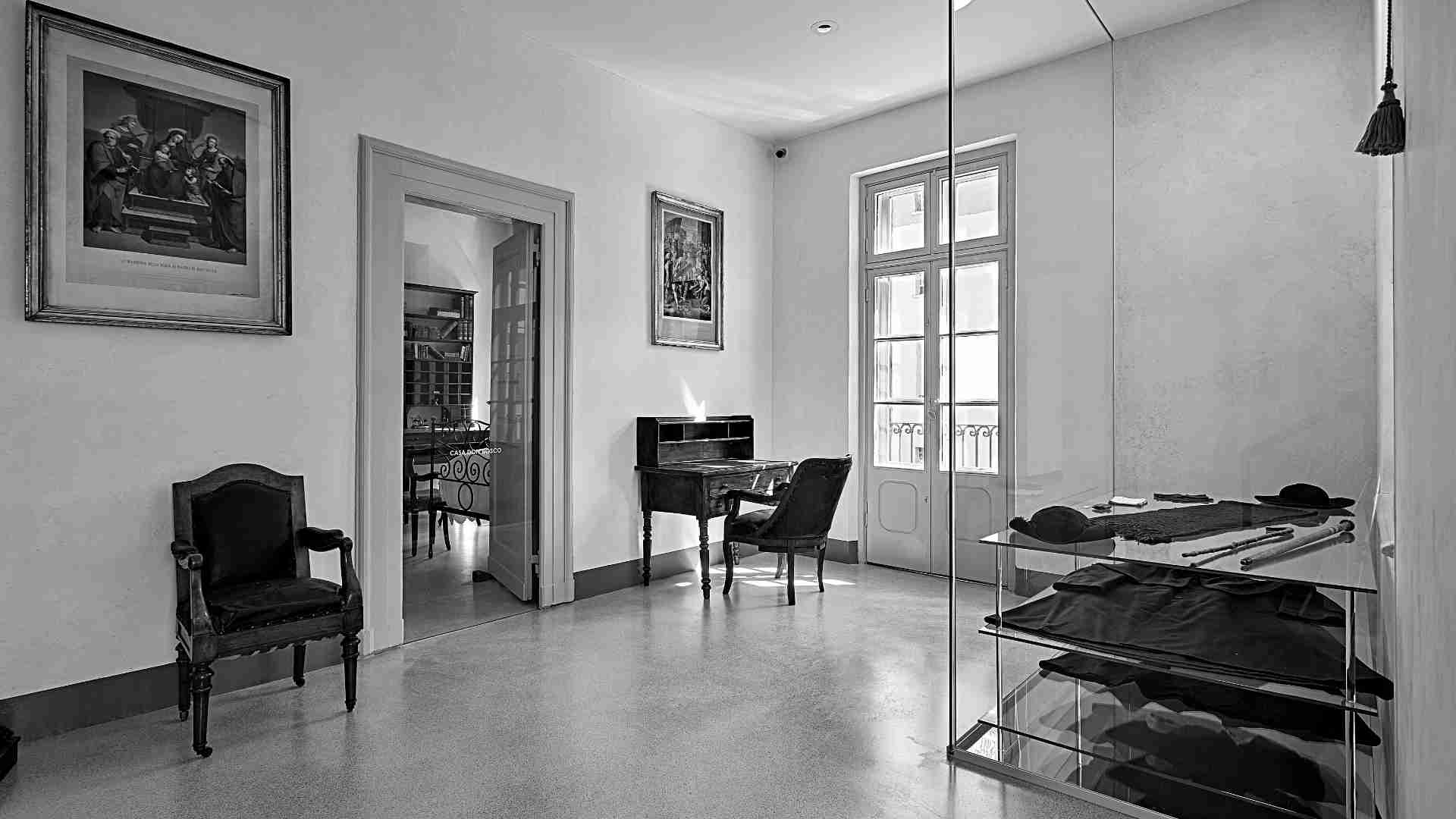On the Museum’s second floor, the heartbeat of the entire Pinardi Building pulses from the “Camerette”, the personal rooms of Don Bosco. The ante-camera was originally Don Bosco’s personal room (1853-1861) which served as his bedroom, parlour and office (cf Biographical Memoires, IV, 657-658). Here, Don Bosco wrote many of his first popular works. An original section of the floor is preserved under the da mihi animas sign. After the 1861 building expansion, this room was converted into a waiting room for Don Bosco’s many visitors. Some pivotal events took place in this room. Dominic Savio met Don Bosco here for the first time in 1854 and was fascinated by the sign on the wall: Da mihi animas cetera tolle. Five years later, on December 18, 1859, Don Bosco founded the Salesian congregation here. The original, handwritten minutes of the foundation are on display.
This was Don Bosco bedroom from 1861 to 1887. It bears witness to his many long nights of work and study. The furnishings recount his daily activities: the bed where he dreamed his dreams, the sofa and chairs where we met hundreds of visitors, the cubby-hole shelving where he sorted his correspondence, the desk where he composed the first Constitutions for the Salesian and the Daughters of Mary Help of Christians (Salesian Sisters).
For twenty-two years after Don Bosco’s death, this room was used by Fr. Michael Rua as a bedroom and office. Today, after patient scrutiny of historical documents, the room has been restored to the way Don Bosco had arranged it during the years in which he lived here (1861-1887).
The next room was Don Bosco’s chapel from 1886 until his passing. It was consecrated by Card. Alimonda, Archbishop of Turin, on January 24, 1886, the feast of St Francis de Sales. Don Bosco’s altar, which is now on display in the Museum’s new chapel, was a welcome replacement to a makeshift altar-cabinet originially used by Don Bosco at this spot.
During Don Bosco’s final illness (late 1877 – January 1888), he was transfered to this corner room. This is where he passed from time into eternity. Today, a simple shrine honours this memory. The saint’s few earthly possessions are laid out where his deathbed stood: his cassock, overcoat with pilgrim’s cape, hats, and biretta.
In 1876, the long, covered balcony was added to the front of the house, its large windows overlooking the courtyard.

The prie-dieux were used by the young people who came to Don Bosco for the sacrament of confession when he could no longer walk down to the Basilica.

Historically, there was a student dormitory at the corner where the Camerette wing connected to the 1853 Pinardi Building. Tradition holds that St. Dominic Savio was among the students who slept there. Today, this space relives St. John Bosco’s beatification and canonization through historical footage and precious artifacts, including the precious gold-gilded urn designed by Salesian architect G. Valotti for the beatification, the silk-embroidered vestments made by forty Daughters of Mary Help of Christians, and the embroidered silk antependium. The antependium was created for the former Altar of St. Peter, Don Bosco’s first resting place in the Basilica. Also on display is a water jug from the Clément family, commemorating Don Bosco’s bilocation on October 14, 1878 in Drôme, Saint-Rambert d’Albon, France.
The next gallery is dedicated to the Salesian Missions. The exhibit includes Don Bosco’s original desk-top globe and the cassock of Bishop Luigi Versiglia, missionary and martyr in China. Finally, a reconstruction of Mama Margaret’s bedroom honours the spot where she passed away.





FOLLOW US.
Facebook
Instagram
Youtube
Vimeo
Linkedin
Pinterest
Subscribe to our newsletter.
Receive updates on new exhibits, conferences and events at Casa Don Bosco Museum.